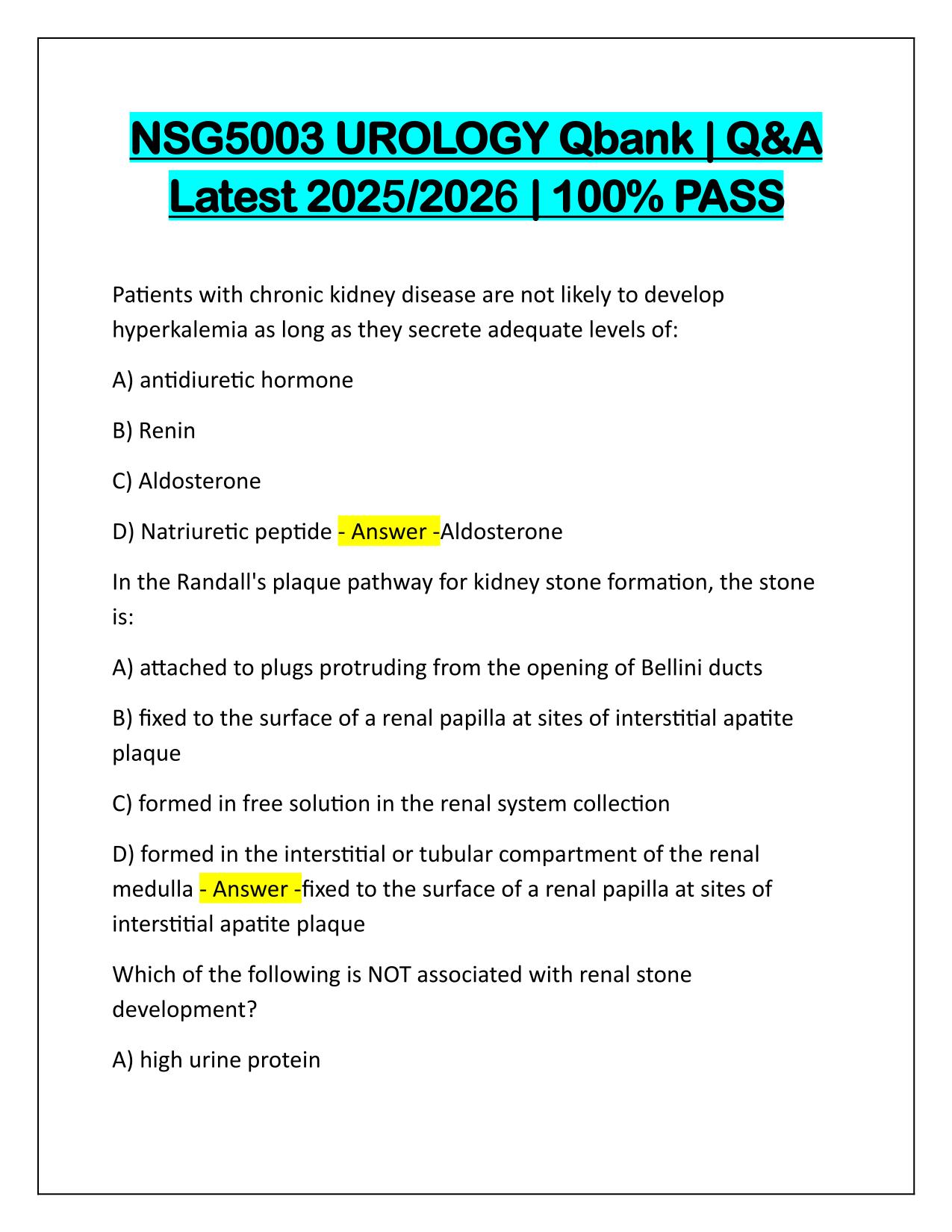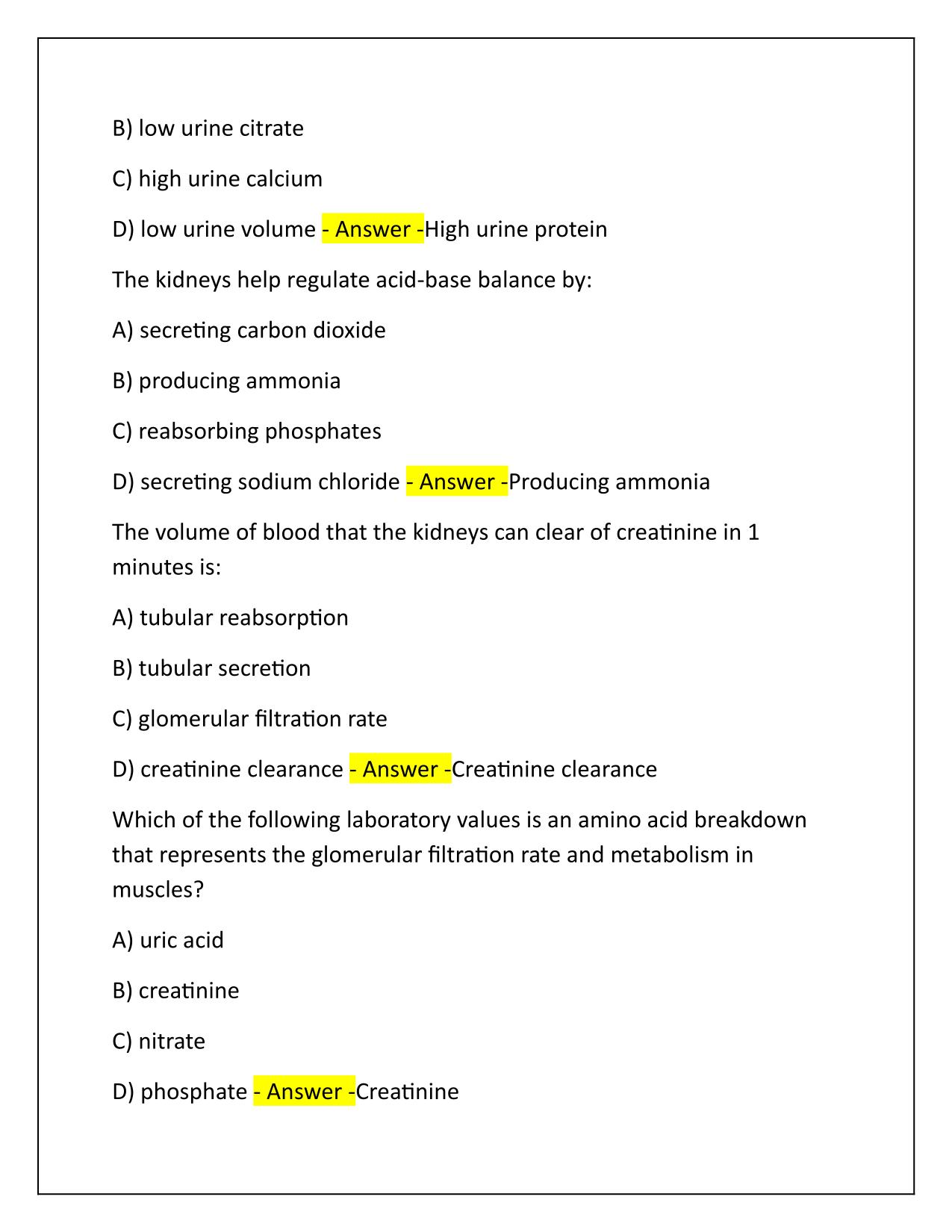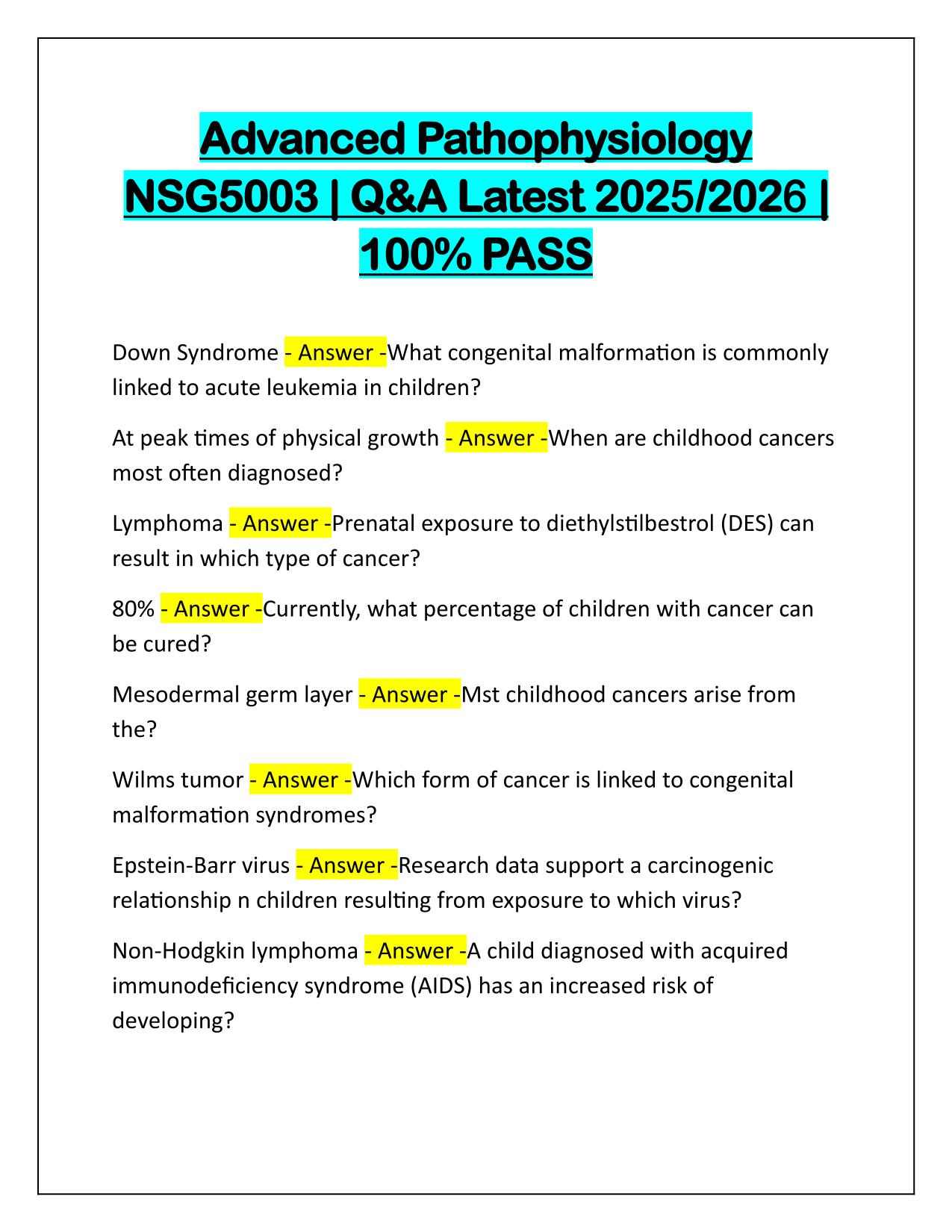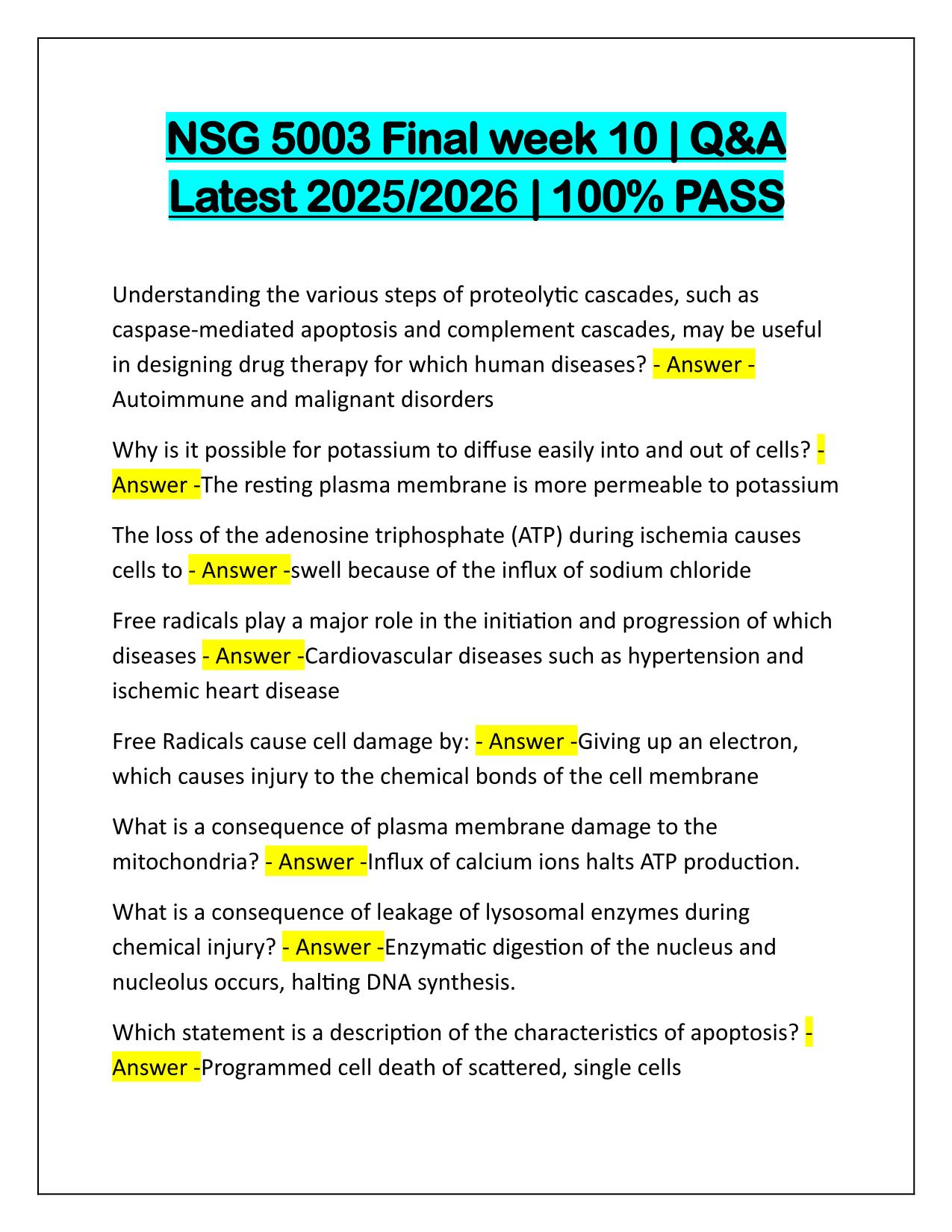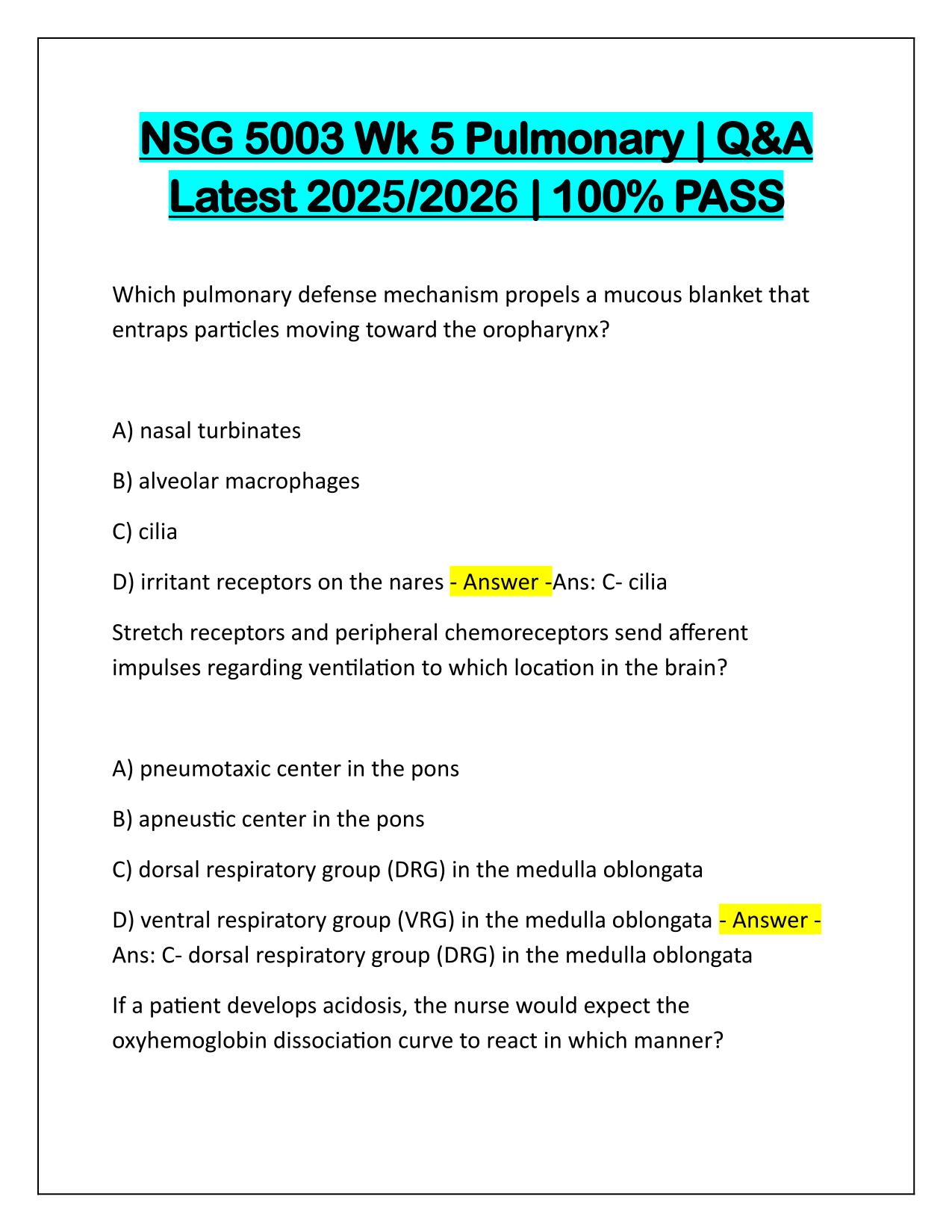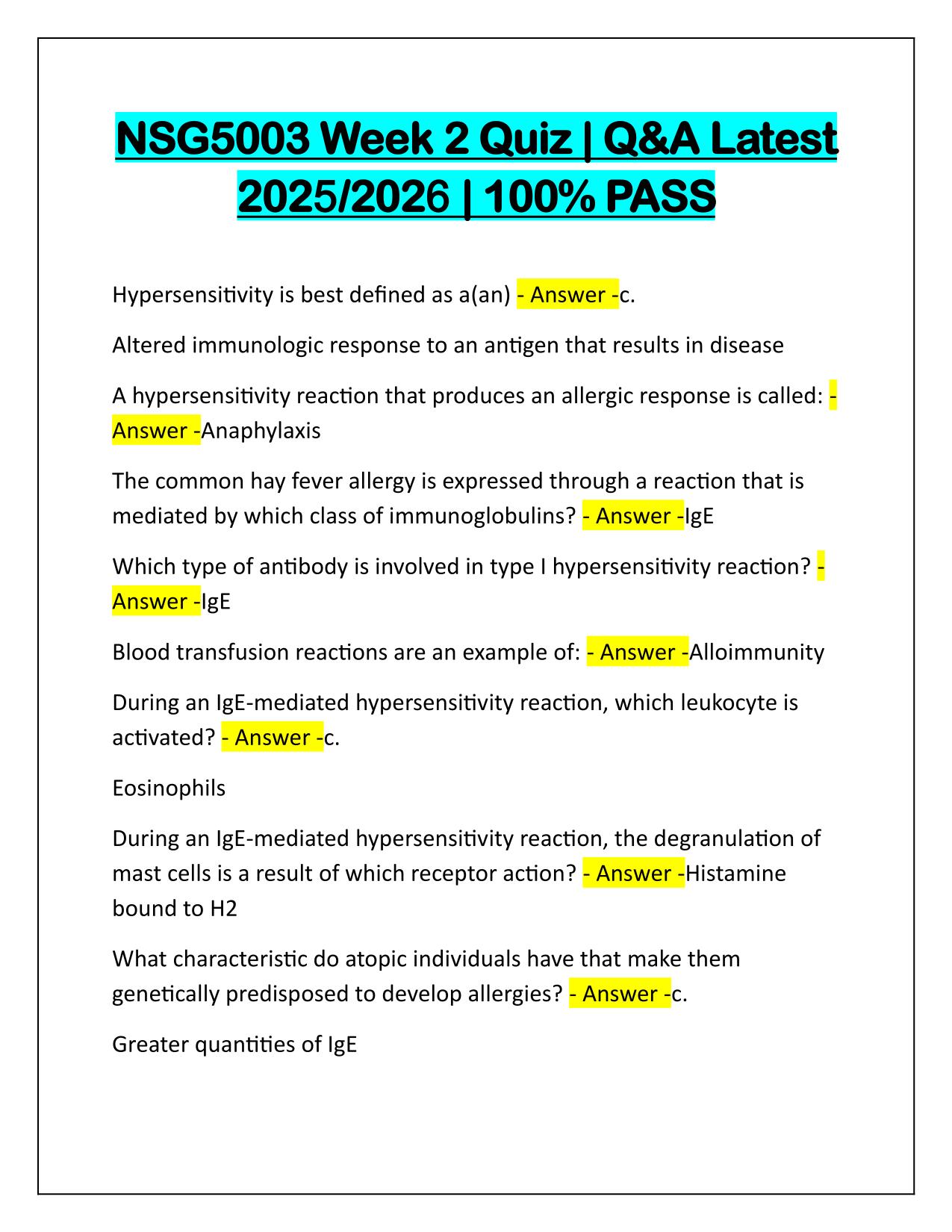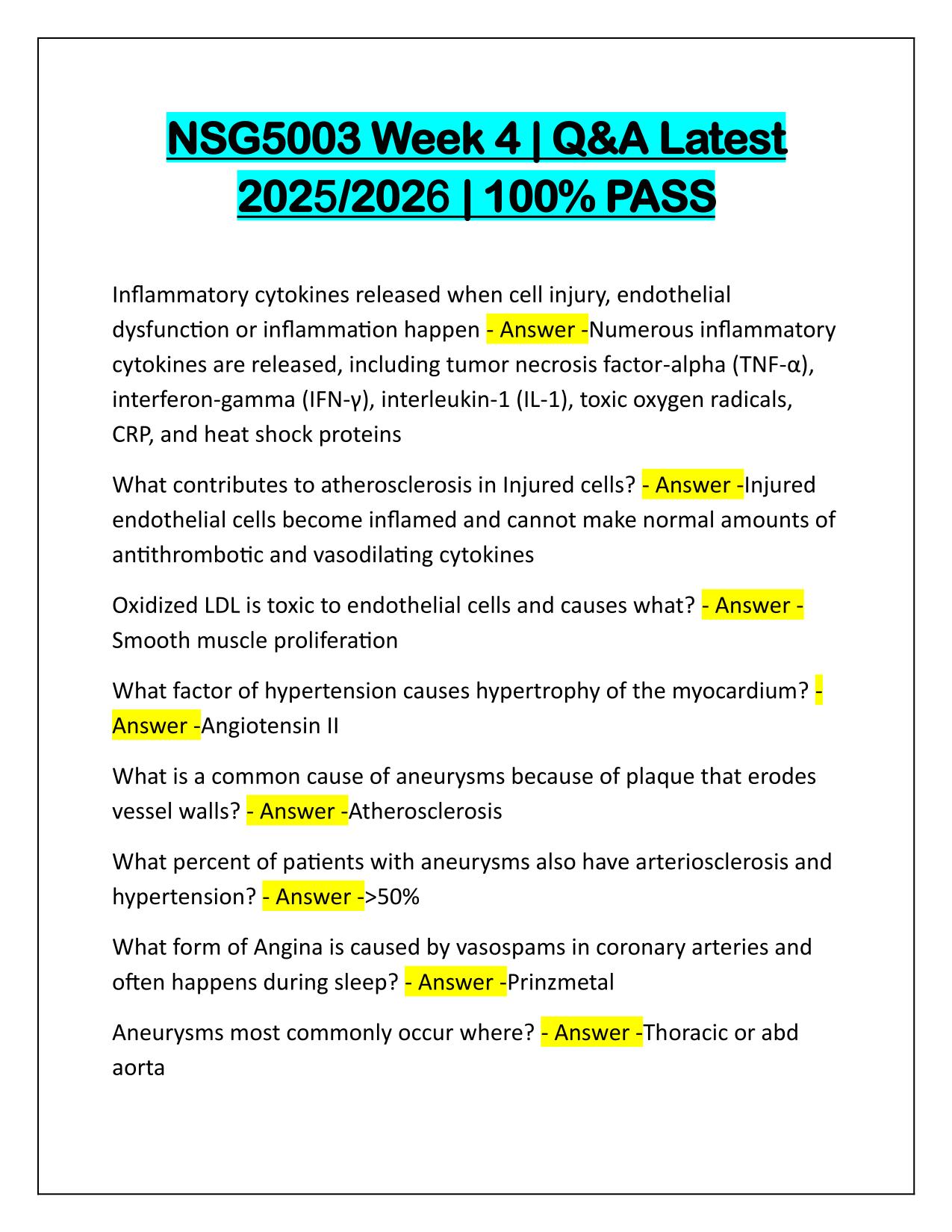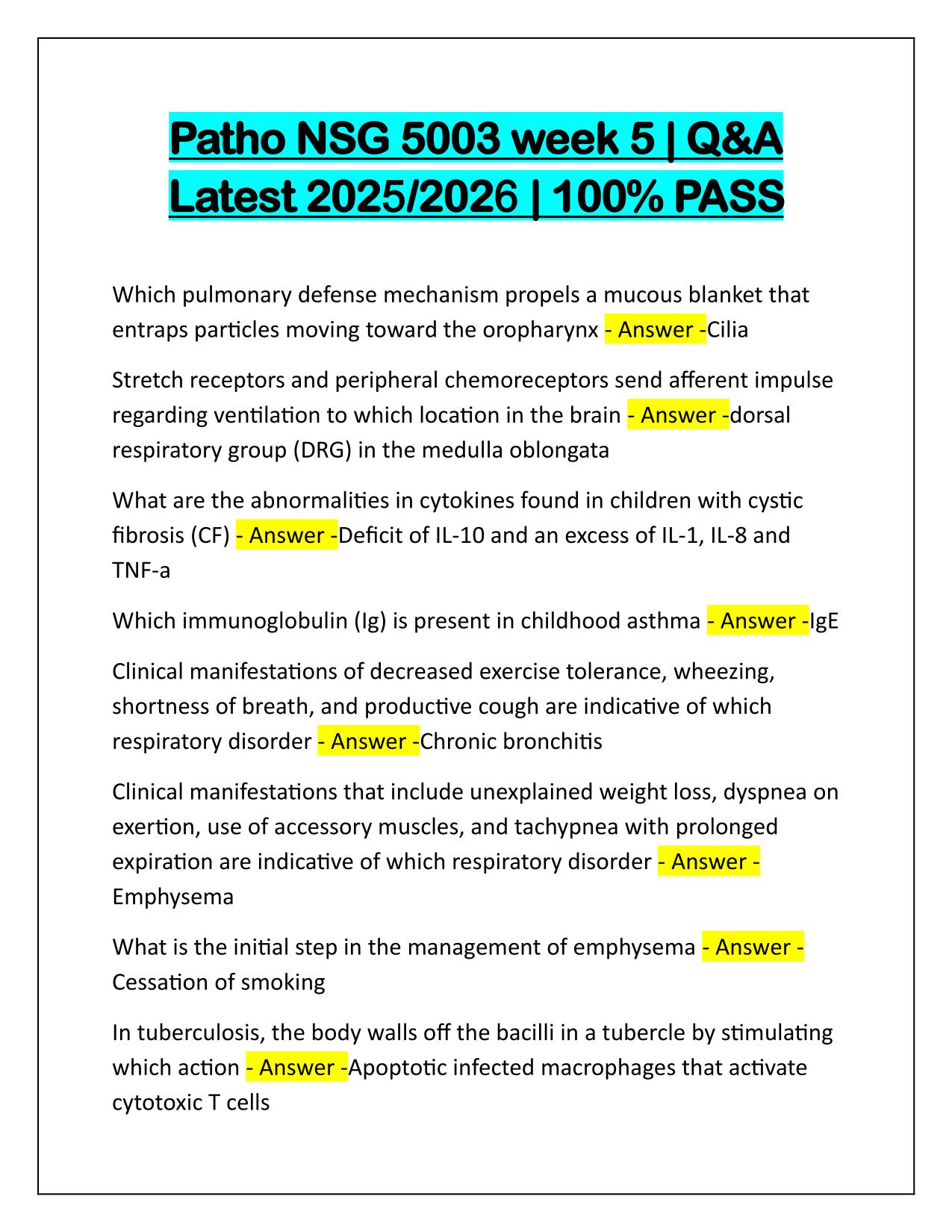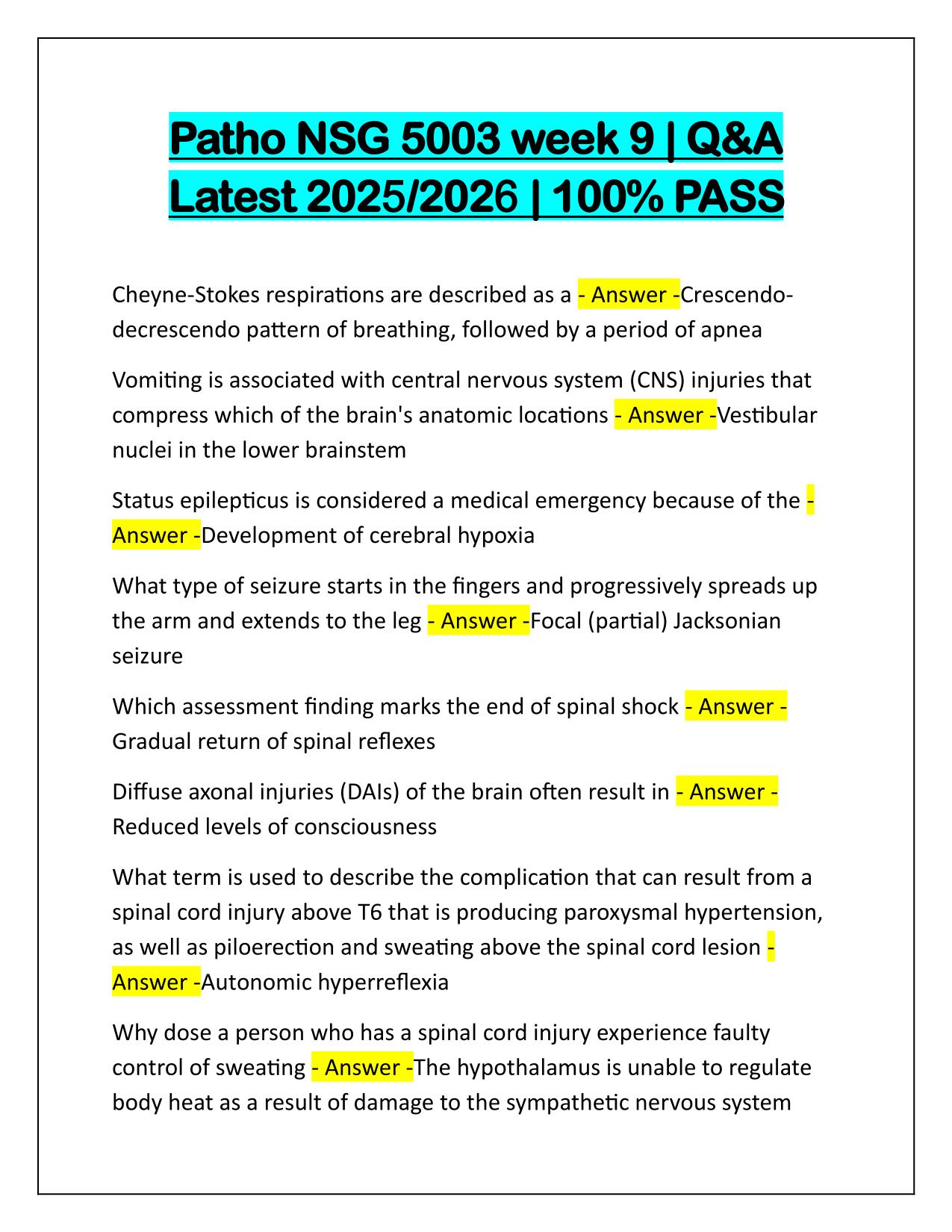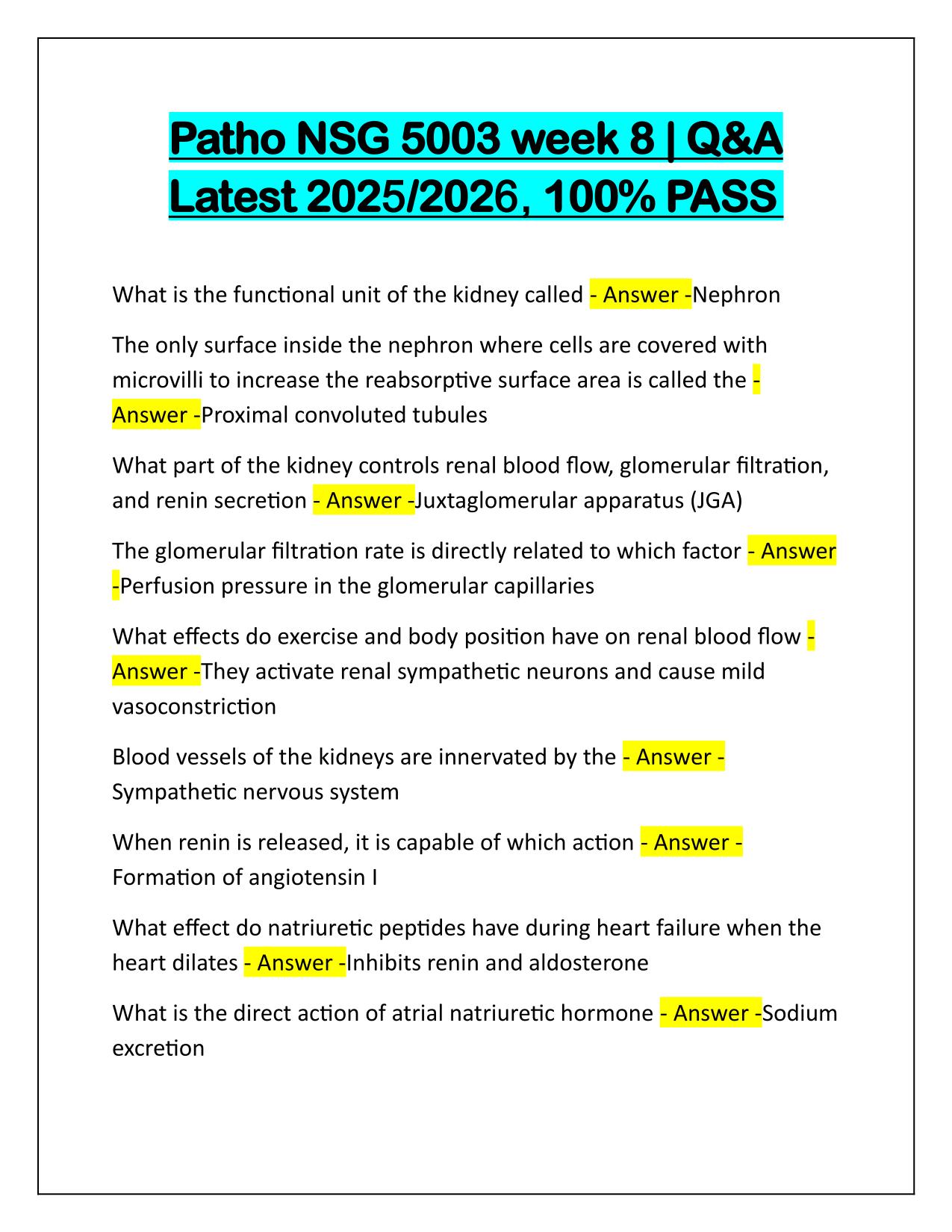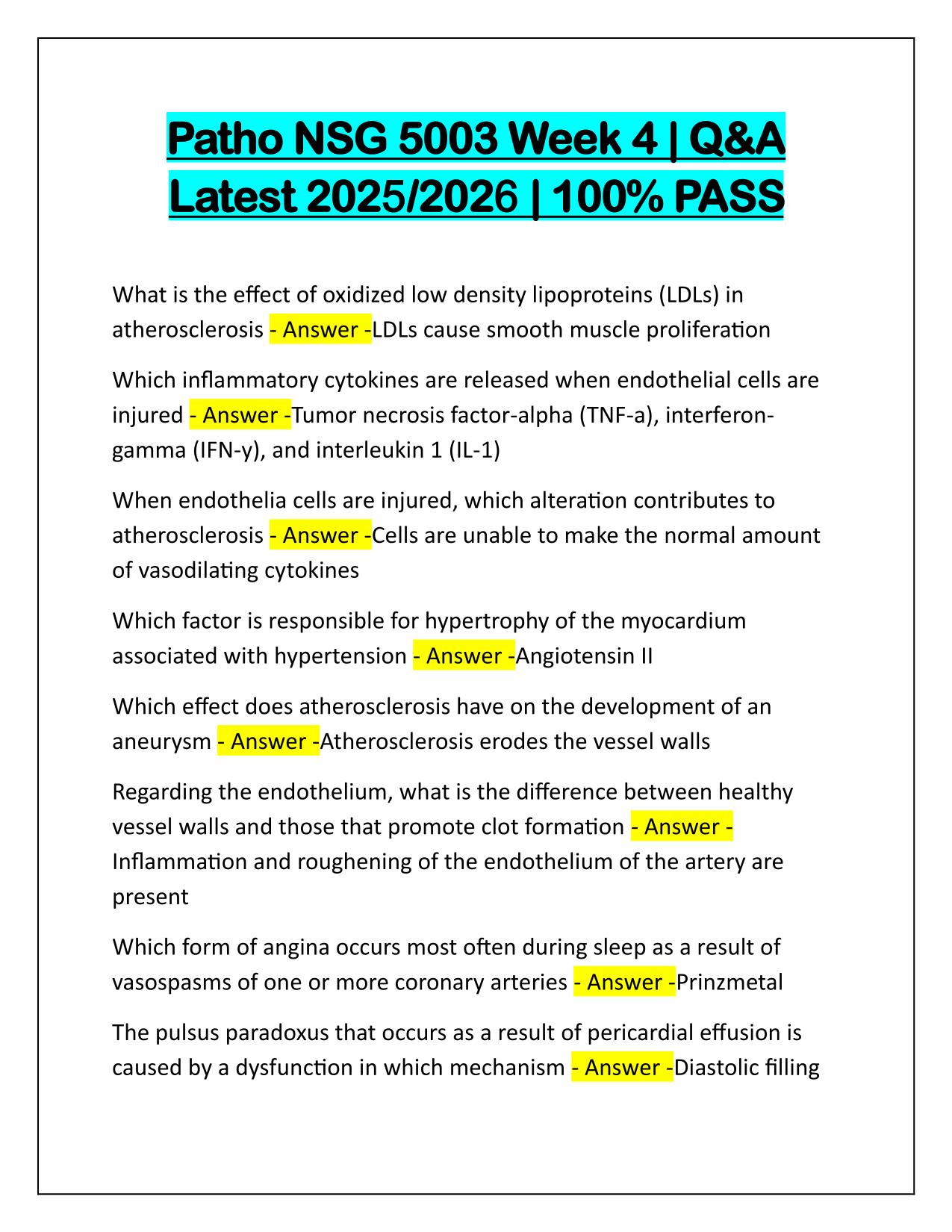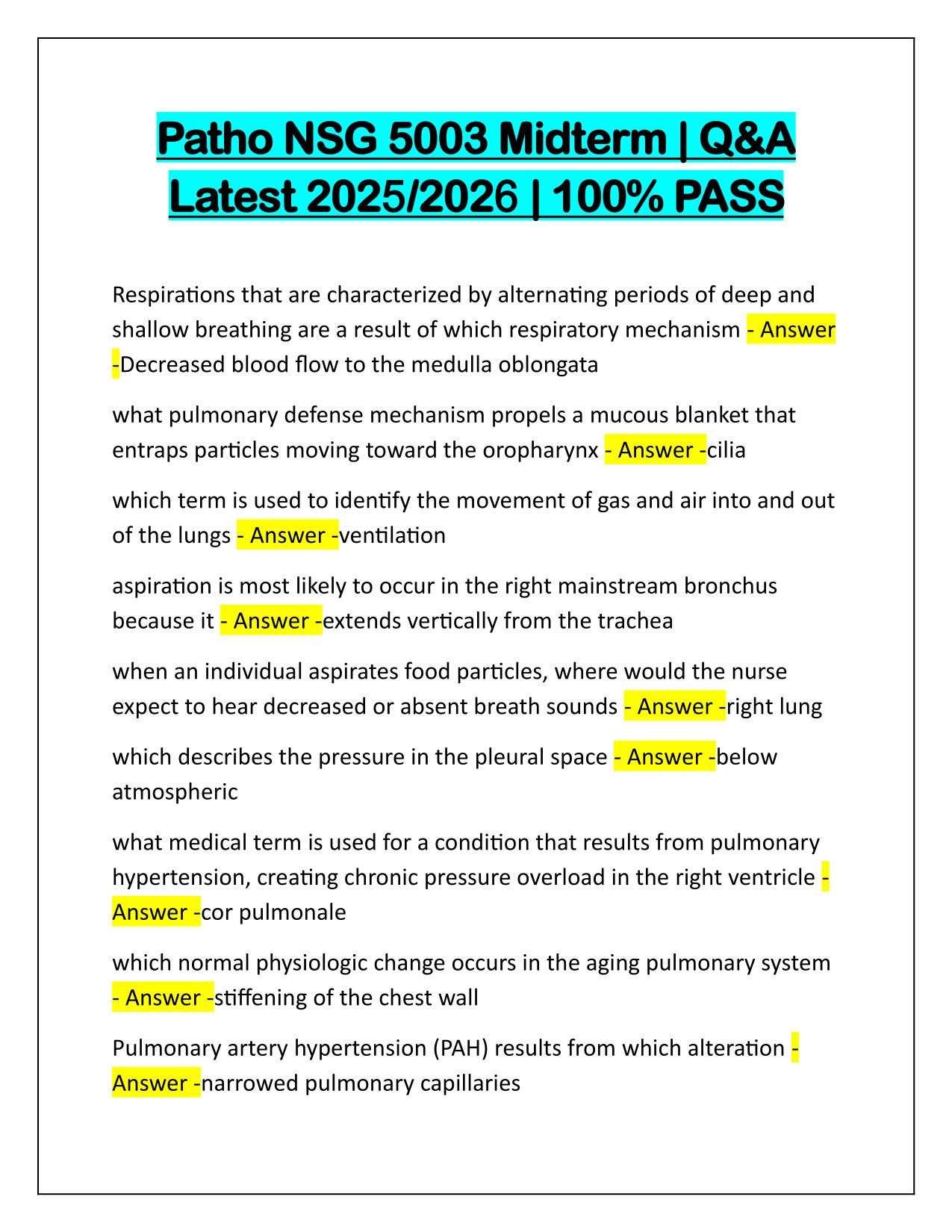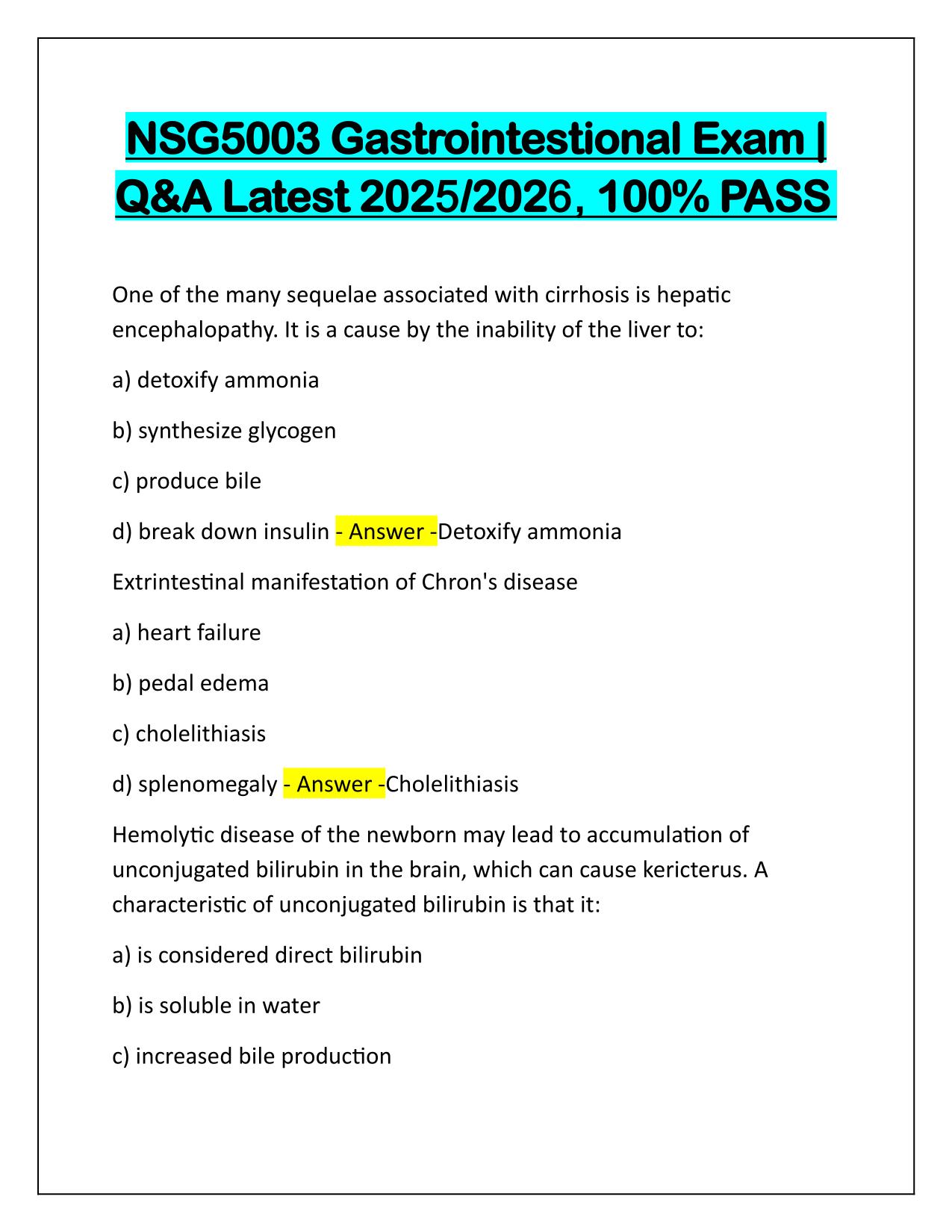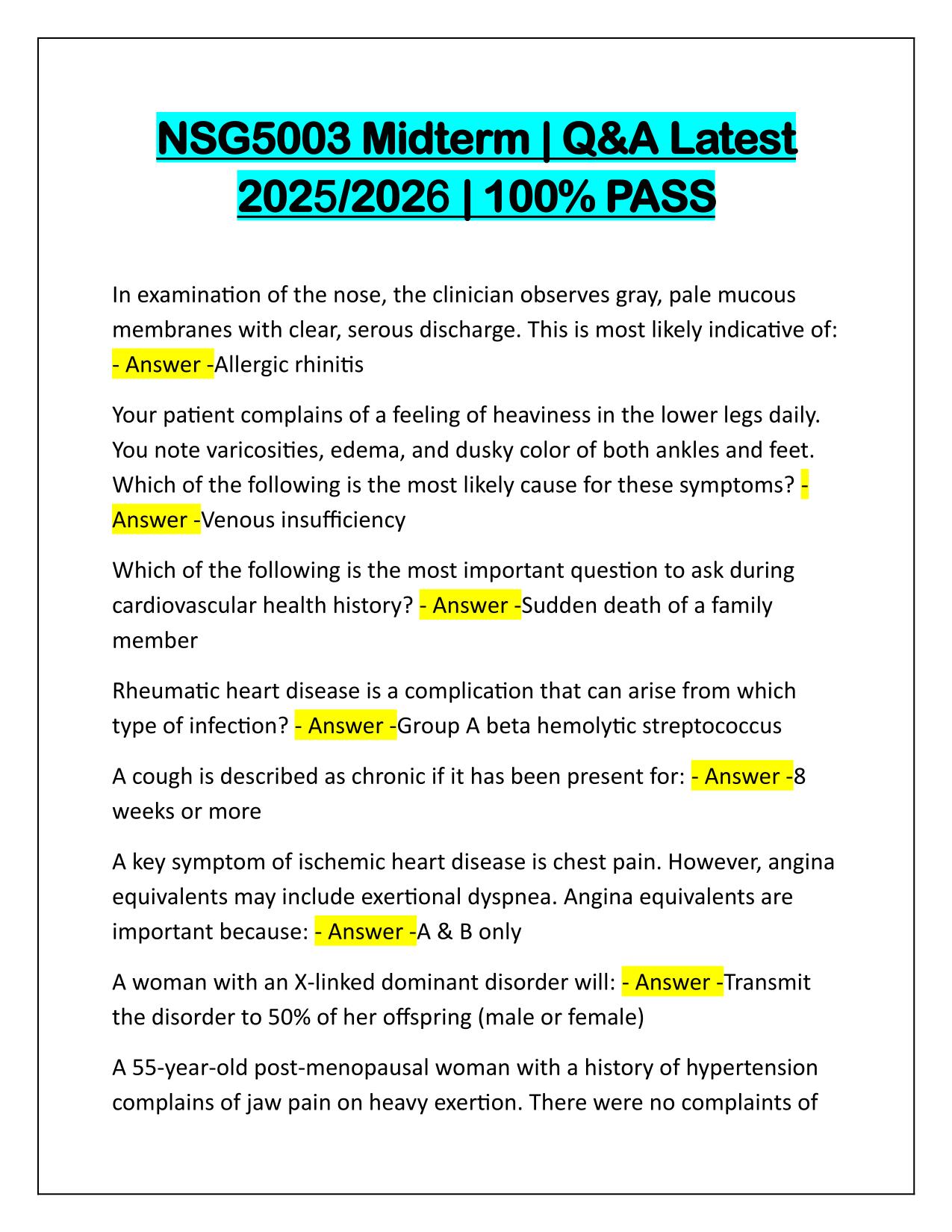NSG5003 UROLOGY Qbank Q&A Latest Update 2025
Course:
NSG 5003
Institution:
NSG 5003
NSG5003 UROLOGY Qbank Q&A Latest Update 2025
After purchase, you get:
✅ Instant PDF Download
✅ Verified answer explanations
✅ Refund if not Satisfied
✅ Prepared for 2025/2026 test cycle
Document Information
| Uploaded on: | May 4, 2025 |
| Last updated: | May 12, 2025 |
| Number of pages: | 24 |
| Written in: | 2025/2026 |
| Type: | Exam (elaborations) |
| Contains: | Questions & Answers |
| Tags: | NSG5003 UROLOGY Qbank Q&A Latest Update 2025 |
Seller Information

AdelineJean
User Reviews (0)
Exam (Elaborations)
$9.00
Bundle Deal! Get all 13 docs for just $23.99
Add to Cart
100% satisfaction guarantee
Refund Upon dissatisfaction
Immediately available after purchase
Available in Both online and PDF
$9.00
| 0 sold
Discover More resources
Available in a Bundle
Content Preview
NSG5003 UROLOGY Qbank | Q&A Latest 2025/2026 | 100% PASS Patients with chronic kidney disease are not likely to develop hyperkalemia as long as they secrete adequate levels of: A) antidiuretic hormone B) Renin C) Aldosterone D) Natriuretic peptide - Answer -Aldosterone In the Randall's plaque pathway for kidney stone formation, the stone is: A) attached to plugs protruding from the opening of Bellini ducts B) fixed to the surface of a renal papilla at sites of interstitial apatite plaque C) formed in free solution in the renal system collection D) formed in the interstitial or tubular compartment of the renal medulla - Answer -fixed to the surface of a renal papilla at sites of interstitial apatite plaque Which of the following is NOT associated with renal stone development? A) high urine protein
